I grew up believing that if I accidentally swallowed gum, I wouldn’t be able to digest it for seven years. Even to this day I don’t talk with gum in my mouth out of fear of swallowing it.
It turns out I wasn’t the only one who believed this gum swallowing theory. In fact, there are many other things I used to believe that others believed, too.
Did you believe you had to wait at least 30 minutes after eating to go swimming, or that sitting too close to the television would ruin your eyesight?
So did I.
Myths work against you, they make you believe silly things and prevent you from doing things that could actually be great for you. And while following myths sort of worked in your childhood, they can hinder your performance as a marketer.
Competition is fierce and you can’t afford to neglect certain marketing tasks just because others believe they’re ineffective. Do you think it’s wise to stop sending emails just because you read somewhere that email marketing is dead and done with?
We’re going to take a cue from MythBusters today and — like Jamie and Adam — debunk common myths people believe about email marketing with data and real-world examples.
1. Email marketing is dead
Google “email marketing is dead” and you’ll see how many results show up.

And though the results on the first page take you to articles claiming that email marketing is not dead, the amount of search results phrase tells us that many marketers do believe that email marketing is on the verge of extinction.
Nothing could be further from the truth.
According to Campaign Monitor, “email marketing is the king of the marketing kingdom with a 3800% ROI and $38 for every $1 spent.”
McKinsey supports the data as well, stating that email is 40 times more effective at acquiring new customers than social media:
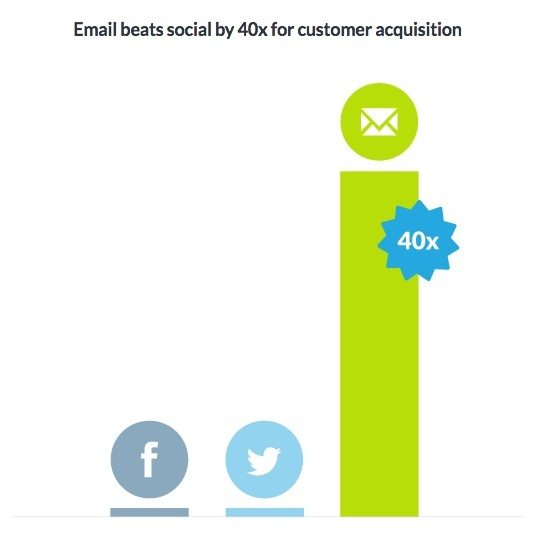
And the fact that Vero got a 450% increase in conversions with a few changes to their email marketing program is proof enough that not only is email marketing alive, but it’s thriving.
2. Email marketing automation is expensive and time consuming
Marketing automation may sound intimidating, but when done correctly, it can increase your sales. Forrester research explains that B2B marketers who used marketing automation increase sales pipeline contribution by 10% on average.
Email marketing automation helps you properly segment your campaigns and deliver personalized messages to the right audience at the right time and do so automatically. Fortunately, there are many affordable email marketing automation tools available such as Drip, AWeber, Infusionsoft, and ActiveCampaign.
Setting up your email marketing automation is a breeze with these tools. It’s simply a matter of dragging and dropping elements into place or clicking to add what you need.
To demonstrate, here’s how ActiveCampaign enables you to automate your email marketing campaigns:
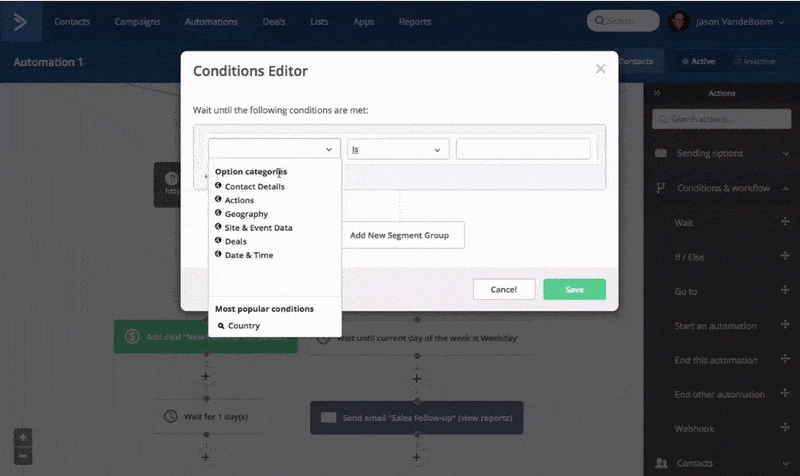
What’s even better is that Instapage integrates with a whole array of email marketing tools, allowing you to instantly connect your post-click landing page leads to your campaigns.
3. Unsubscribes are bad news
Marketers love to brag about the number of subscribers they have; this is probably why many brands showcase the number of subscribers they have on their blog or newsletter sign-up forms.
Granted, the numbers add social proof, but that’s not the only reason why we share our list size. We tend to take pride when we have a lot of email subscribers because the number signifies the efficacy of our marketing.
Even though an “unsubscribe” button is required for email marketing, you hope nobody actually clicks the button. When someone does click, you may feel depressed because you believe that’s a sign that you’ve failed as an email marketer. In reality, that’s not how things work.
An unsubscribe doesn’t mean that your email marketing has flaws, it just means that person wasn’t an engaged prospect or customer, and they were unlikely to buy from you (or continue buying from you) in the first place. In this situation, your list is smaller (which most likely saved you money) and no matter how many personalized emails you sent — they still weren’t going to buy from you anyway.
This is the reason why HubSpot manually unsubscribed 250,000 people from their marketing blog and started sending fewer emails.
Unsubscribers and inactive subscribers are deadweight. Come to grips with that fact and delete them from your list before they make a dent in your ROI.
4. Subject lines should be short
Marketers are obsessed with length.
A shorter email capture page is thought to bring more conversions, the same is true for a shorter lead capture form. But, size isn’t the only thing that matters in CRO.
Many marketers also believe that only short email subject lines are effective because longer subject lines will get cut off and the recipient won’t be able to read the whole thing and click-through.
The ideal length for your subject line is said to be between 41-50 characters, and on mobile devices, the subject lines should contain no more than 35 characters.
The study from Return Path, however, busts this subject line myth. Return path analyzed 9,313,885 emails from more than 3,000 retail senders in February 2015 to determine the average read rate. This is what they found:
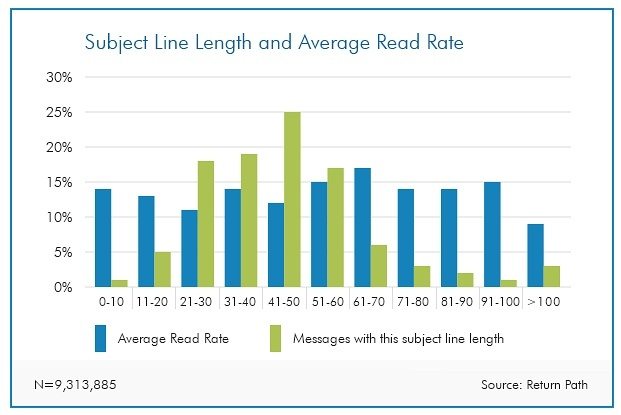
The most common length was found to be somewhere between 41 to 50 characters. However, longer subject lines with 61-70 characters proved to have the highest average read rate at 17% — the highest rate of all the character lengths.
So based on this study, there’s no correlation between email subject length and read rate. Email personalization, however, does have a role to play. Emails with personalized subject lines are 26% more likely to be opened:
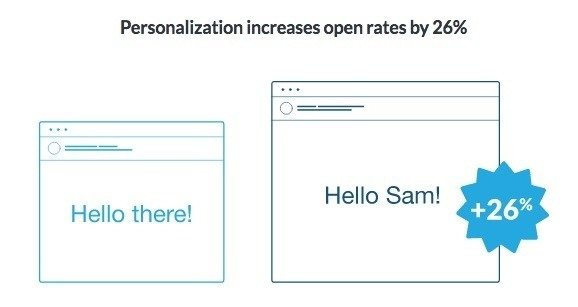
5. Message match is not important for email post-click landing pages
We’ve demonstrated before that message match can make or break your PPC campaigns. The fact that most marketers do ignore is that message match is just as important for your Google Ads campaigns as it is for your email campaigns.
The email you send to introduce your offer should have a clear and relevant connection to the email post-click landing page you link to it.
For example, this is the email CoSchedule sent out to promote their “Social Campaigns” feature:
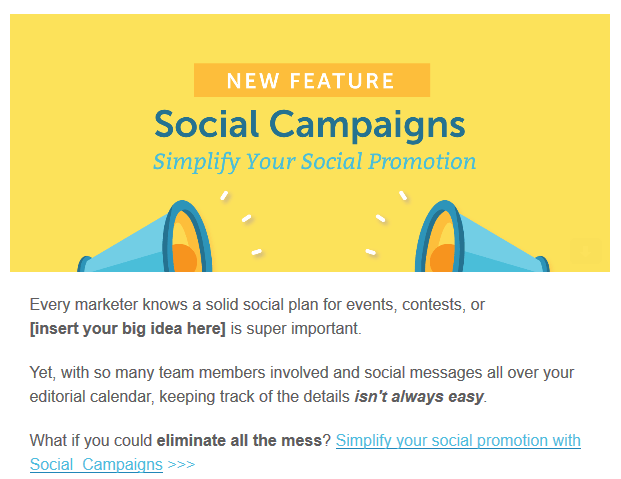
Once you click that text CTA in the email, you’re directed to this email post-click landing page:
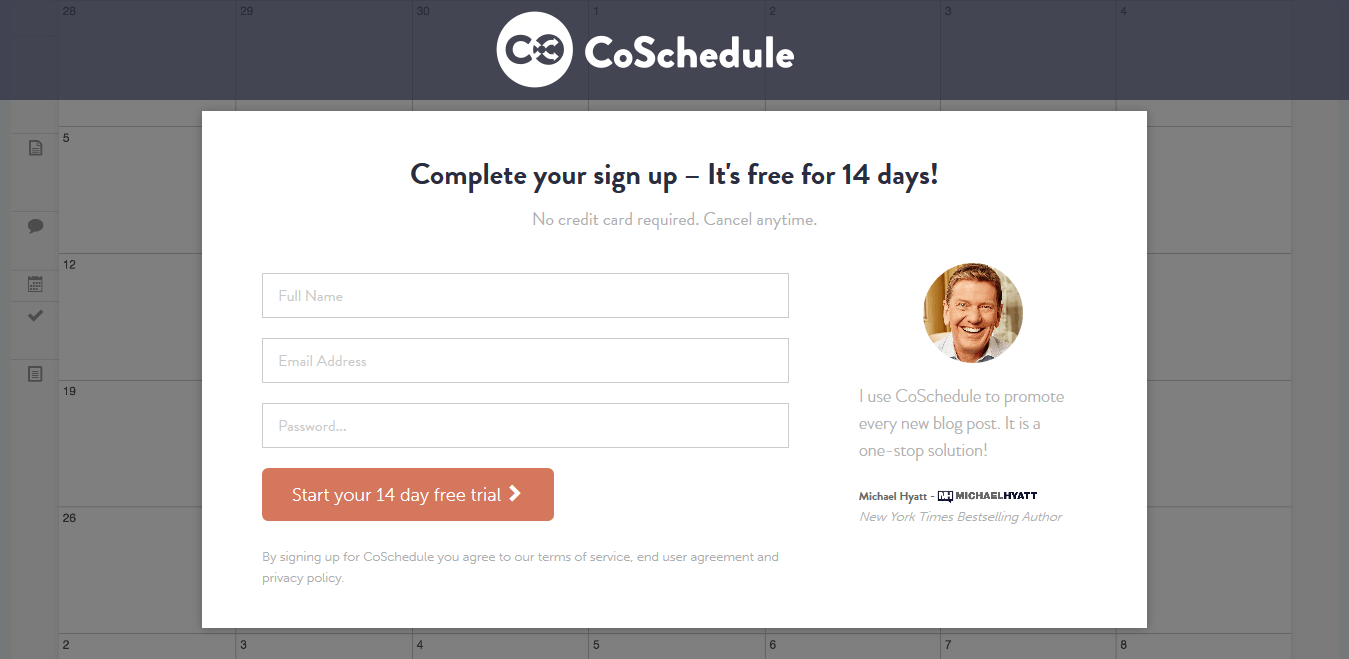
There is zero message match between the email and the post-click landing page. The page doesn’t even mention the Social Campaigns feature and just plainly asks readers to sign-up for the 14-day free trial.
In contrast, HubSpot’s email and corresponding post-click landing page do have message match. The post-click landing page provides the reader exactly what the email promised.
Here’s HubSpot’s email:
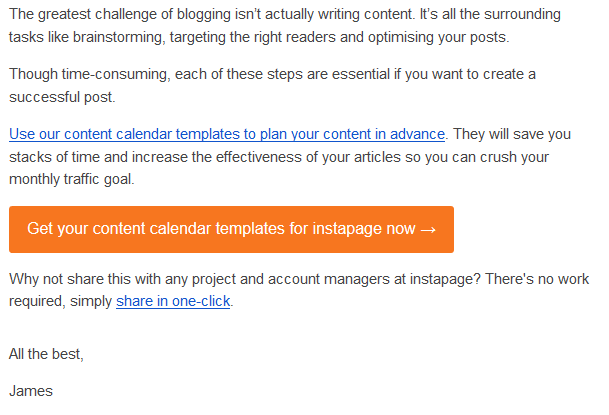
And this is the corresponding post-click landing page:
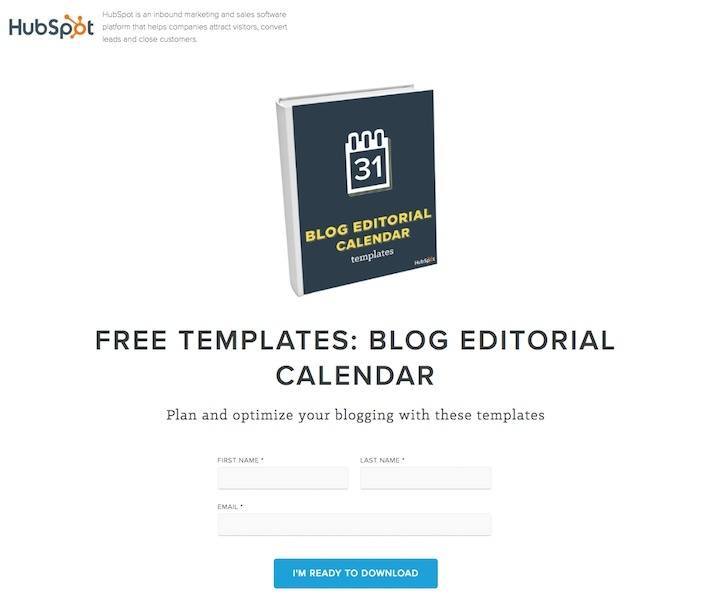
If you received both of the example emails above, which post-click landing page are you more likely to convert on? Hopefully you see that message match is important for your email marketing campaigns if your goal is to convert recipients on your offer.
6. There’s one perfect day to send emails
Are you one of those marketers that schedules your emails so that they go out on a specific day of the week because you believe you’ll get more engagement?
It turns out there isn’t one single day that guarantees more email engagement — so much so that there is conflicting research for which day of the week is optimal for sending emails.
In his book, The Science of Marketing, Dan Zarella believes that the best days for email open rates and click rates is Saturdays and Sundays.
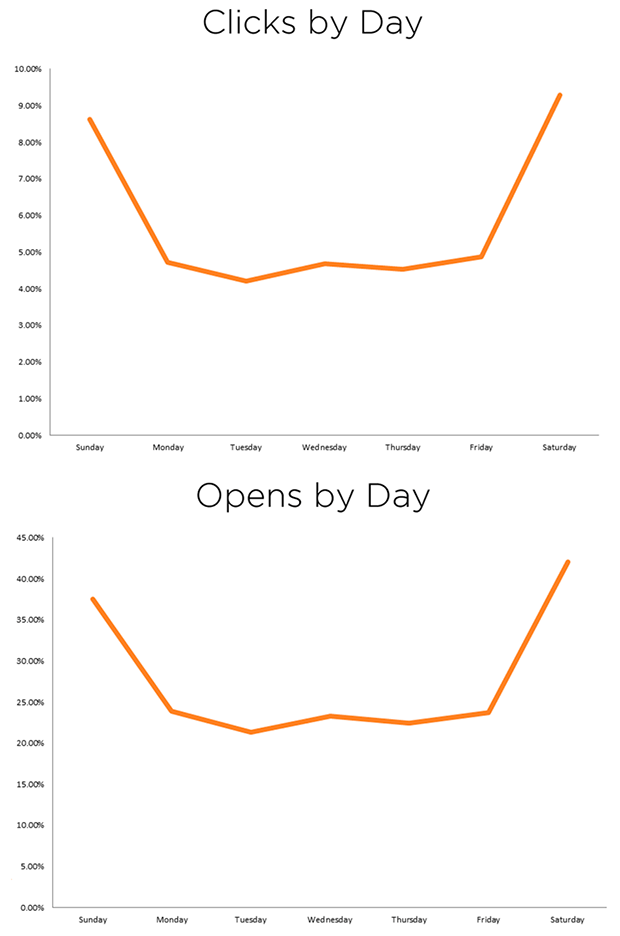
MailerMailer’s email marketing metrics report showed that open rate peaked on Tuesday and Wednesday, whereas the worst days were weekends:
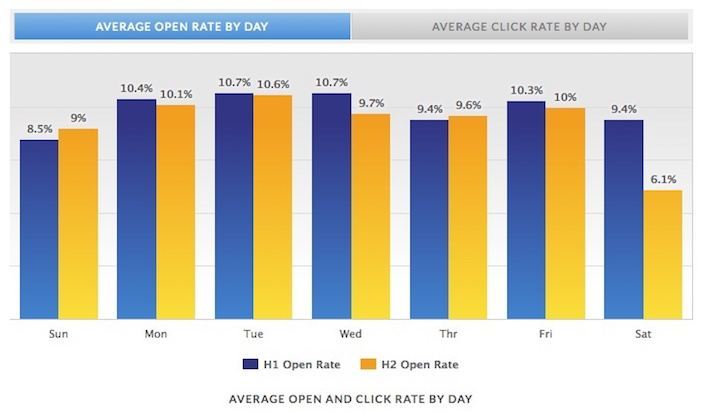
GetResponse’s data showed that Tuesday had the highest open rate, Friday had the highest click through rate, and weekends had the lowest open rates:
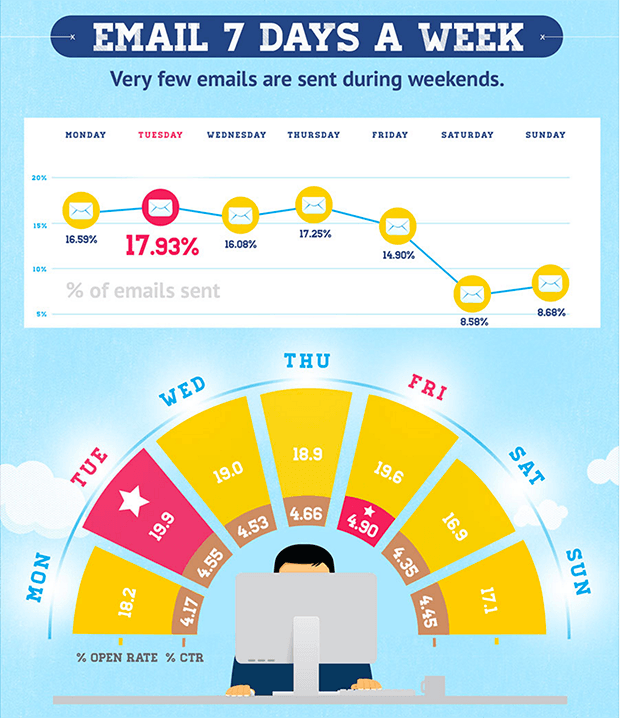
MailChimp’s research, on the other hand, says that the best day to send emails is Thursday:
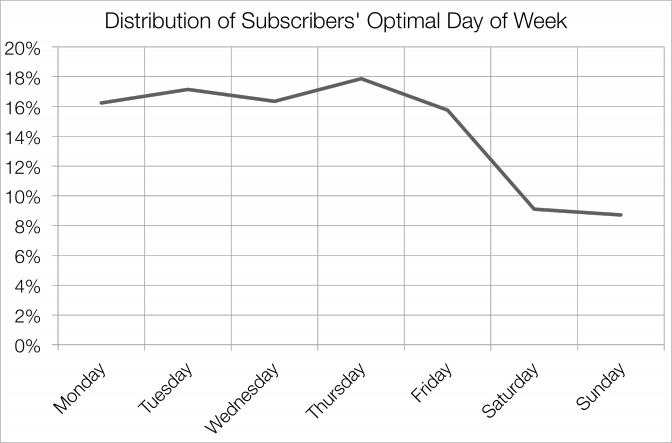
What do all of these tests prove (if anything)?
There is no perfect day to send emails to achieve your highest open and click-through rates. You must get to know your audience well and A/B test your email campaigns to determine which day (and time) is best for your subscribers.
Don’t let your email marketing campaigns suffer
Don’t believe any hype you may read or hear about email marketing being dead. Find out what works best for your subscribers and continue that pattern. Don’t favor one day of the week over another on a whim. Rather, base your email marketing campaigns on your data. Find out what’s best for your respective subscribers and you won’t have to rely on myths for high click-through rates.
Finally, always remember to connect your email marketing campaigns with relevant, message matched post-click landing pages because this is the best way to get clicks for your offers. Haven’t created a post-click landing page yet? Sign up for an Instapage Enterprise demo today.

See the Instapage Enterprise Plan in Action.
Demo includes AdMap™, Personalization, AMP,
Global Blocks, heatmaps & more.
